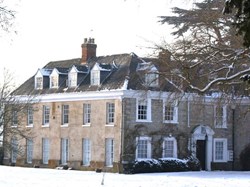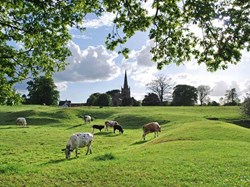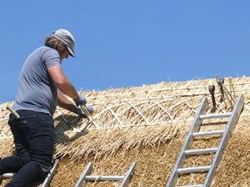Village
Despite a population of less than 300, Ladbroke's history is full of characters and stories. Did you know
- Ladbroke church is over 700 years old. The inside was renovated by the famous Victorian architect, Sir George Gilbert Scott.
- A hoard of Roman coins was discovered in a Ladbroke field.
- The Domesday Book records that in 1086 Ladbroke was a thriving community bigger than Birmingham.
- Much of the village was owned by Robert Catesby, leader of the Gunpowder Plot.
- Prisoners of War were held in Ladbroke during WW1 and WW2.
- A huge ammonite fossil was found here in 2013.
- There are more than 50 bird species in the parish.
DISCOVER MORE
Get a village map**, village trail leaflet** or information about thatching below.
There is more information about the church, people and nature in other sections of this website.
** For other languages see below the flags










